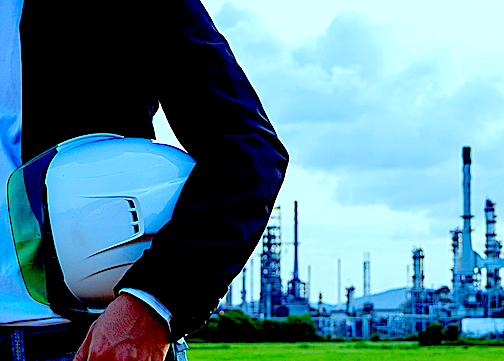As with any effort to improve performance on aspects of manufacturing, metrics and key performance indicators (KPIs) provide a measuring stick with which to gauge progress. The E60.13 technical committee of the American Society for Testing & Materials, now known as ASTM International (ASTM, astm.org), is responsible for creating sustainable-manufacturing standards. One of them, ASTM E 3096-18 – “Standard Guide for Definition, Selection, and Organization of Key Performance Indicators for Environmental Aspects of Manufacturing Processes,” provides us with some guidance.
The ASTM E3096-18 standard is a helpful starting point for organizations seeking to drive environmental sustainability in their businesses. I like to launch strategic initiatives by defining metrics, since doing so really helps us get a clear focus. Stephen Covey, in his seminal book, The Seven Habits of Highly Effective People, taught us to “begin with the end in mind.” Metrics help us to do that.
ASTM E3096-18 suggests that we begin by defining the areas that we’re targeting and defining the units for measuring those targets. For example, if we’re targeting energy reduction, we’d probably define kilojoules (kJ) as the unit of measurement. If we’re targeting improvements in water management, we’d probably define water in liters as the engineering unit. If we’re targeting a reduction in carbon emissions, we’d probably opt for metric tons of CO2-e.
Speaking of that CO2-e unit, it’s sometimes a bit tricky, despite the fact that the greenhouse-gas (GHG) impact of CO2 is relatively well established. It’s when the CO2-e metric converts emissions to equivalent metric tons of CO2 that things become somewhat complicated. For example, the release of one ton of methane (CH4) is equal to between 20 and 100 tons of CO2, depending upon the timeframe evaluated and who you ask. But, while engineering units for some climate-change impacts may, in fact, be tricky, it shouldn’t hamper your efforts. Simply understand that you may be required to accept ranges for these values.
ASTM E3096-18 also describes a logical process for determining what KPIs are appropriate for the organization. It starts with a definition of organizational objectives. This could involve statements along the lines of, “We strive to reduce water effluent by X liters per year by the year 20YY. . . ” or “It’s our goal to reduce greenhouse-gas emission by X metric tons of CO2-e per year by the year 20XX. . .”
From there, conduct a literature review to identify which metrics currently exist that might suit the organization’s requirements. Then, perform a gap analysis to determine if the metrics discovered in the literature review are adequate. If so, that’s great, and you can move onto the next sustainable manufacturing objective. If not, you must set out to create metrics that validly reflect your sustainable-manufacturing objective. This process reiterates until you have a set of KPIs that faithfully reflect your organization’s sustainable-manufacturing objectives and accurately measure your performance relative to those objectives.
Note that ASTM E3096-18 highlights some admirable real-world examples on, among other things, energy waste and energy efficiency; material efficiency and virgin-material efficiency; and CO2 emissions from electrical energy used and energy consumed per unit of production (e.g., part or item). Access to these types of examples means that your organization won’t be starting from scratch.
Public demand for environmental sustainability isn’t going away. Accordingly, manufacturing industries can expect to come under increased scrutiny regarding environmental impacts. Simultaneously defining your organization’s sustainable-manufacturing objectives and the KPIs that you’ll employ to measure performance is a great start for your journey. ASTM E3096-18 ams you with an exceptional resource to begin the process.TRR
ABOUT THE AUTHOR
Drew Troyer has 30 years of experience in the RAM arena. Currently a Principal with T.A. Cook Consultants, he was a Co-founder and former CEO of Noria Corporation. A trusted advisor to a global blue chip client base, this industry veteran has authored or co-authored more than 250 books, chapters, course books, articles, and technical papers and is popular keynote and technical speaker at conferences around the world. Drew is a Certified Reliability Engineer (CRE), Certified Maintenance & Reliability Professional (CMRP), holds B.S. and M.B.A. degrees, and is Master’s degree candidate in Environmental Sustainability at Harvard University. Contact him directly at 512-800-6031 or [email protected].
Tags: reliability, availability, maintenance, RAM, environmental sustainability, sustainable manufacturing, energy efficiency, safety, climate change, ASTM International, ASTM, ASTM E3096-18



